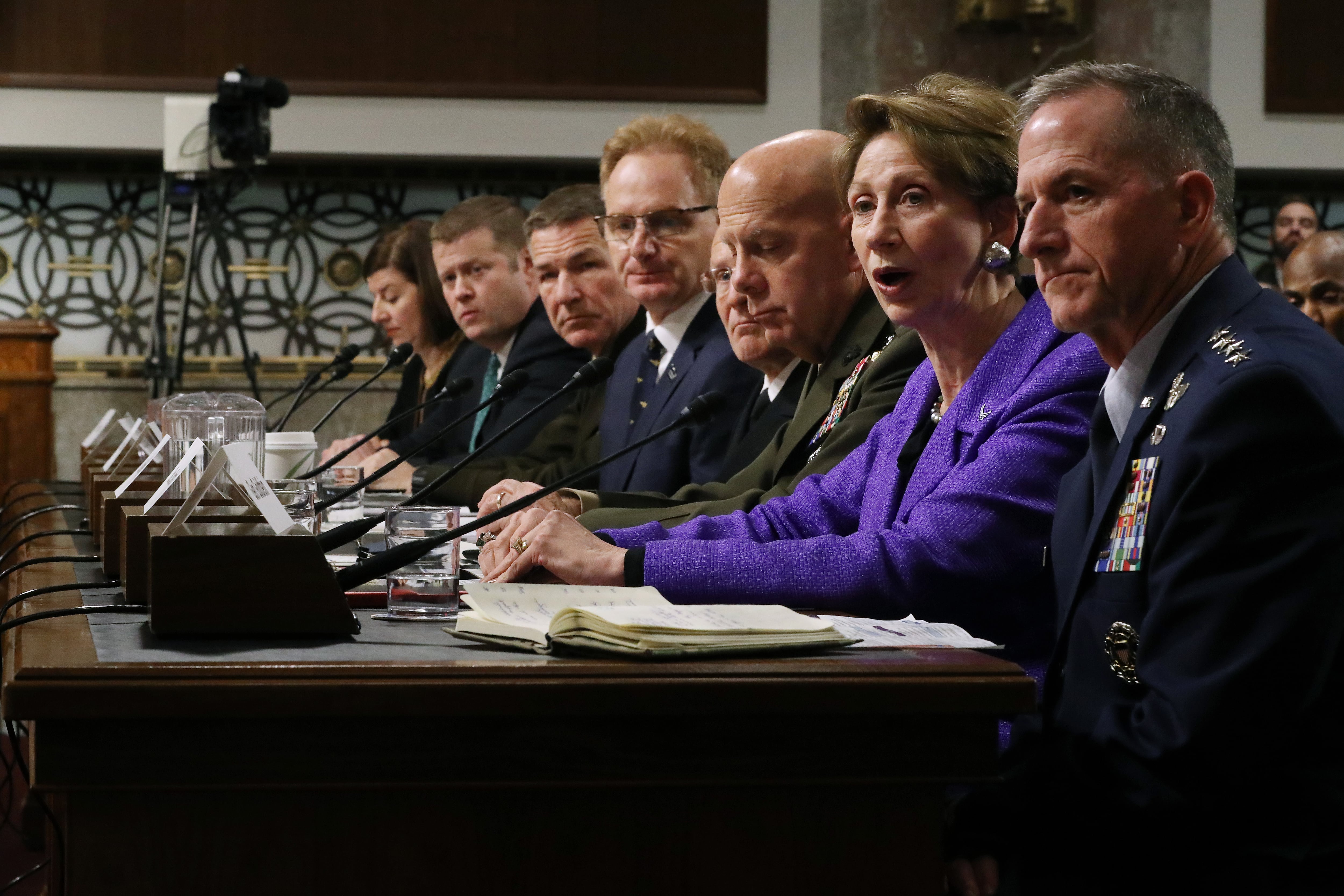WASHINGTON — Members of the House Armed Services Committee expressed deep frustration with the levels for early science and technology funding in the fiscal 2021 budget request on Wednesday, in what could be a precursor to Capitol Hill increasing those numbers.
Appearing before the HASC subcommittee on intelligence and emerging threats, Under Secretary of Defense for Research and Engineering Mike Griffin defended the S&T funding request as the result of a budget that was effectively flat year over year.
For the second straight year, S&T funds for early technology development (the Pentagon’s 6.1, 6.2 and 6.3 accounts) is requested at $14.1 billion; that includes $3.5 billion for the Defense Advanced Research Projects Agency.
Congress, unsatisfied with that same request in FY20, increased the funding to $16.1 billion for that fiscal year, meaning the FY21 request is $2 billion less than what the Pentagon last received.
The mood for the hearing was set early on, with both the chairmen and ranking member of the committee using their opening comments to make it clear they expected to see more S&T funding from the department.
Chairman Rep. Jim Langevin, D-R.I., expressed frustration that investments in future technology continues to be sacrificed for current needs.
“How is it that this year, with an undersecretary of defense for research and engineering, created for the very purpose of looking past the horizon, and with a National Security Strategy that claims to be focused on deterring the wars of the next two to three decades, the department was able to submit a budget request that was less proposed S&T funding than last year?”

Rep. Elise Stefanek of New York, the top Republican on the subcommittee, also expressed “concern” that S&T investments are “a decreasing percentage of our total RDT&E [research, development, test and evaluation] budget.”
“This Congress and this committee particularly recognize the importance of research and development to our long-term technological superiority. Any degradation in these investments places the U.S. at a competitive disadvantage and, more importantly, risks skipping a generation of domestic science and engineering expertise that is so desperately needed and already in such short supply in disciplines like AI, mathematics, computer science, and aerospace engineering,” she said, using an acronym for artificial intelligence.
For his part, Griffin denied that the department has “walked away” from S&T funding, saying it is highly valued by the department.
“This is a tough budget environment. We don’t have top-line growth and we have many, many priorities. As we went through our budget work, I, in fact, was an advocate in R&E for S&T top-line growth. But in reality there are no bad programs,” Griffin said. “And in an environment where we didn’t have any bad programs, we were inevitably, in order to close our budget, we were going to have to make priority choices, and we did.”
He added that the military’s S&T has grown, with the Army’s up 6 percent, the Navy’s 1 percent and the Air Force’s flat, even as the Office of the Secretary of Defense’s S&T accounts took a 4 percent cut.
“I'll only conclude by saying we did the best that we thought we could,” Griffin said.
“Well, Secretary Griffin, I appreciate your perspective. I see it a different way,” Langevin responded.
Making Starfleet real
The acquisition heads of the Army, Navy and Air Force were all in attendance alongside Griffin at the hearing, and at times they faced similar questions about whether there has been enough investment in early S&T.
Will Roper, the Air Force acquisition head, told Langevin that “I share your concern; taking risk in basic research may not put the military at risk today or tomorrow, but it is eroding that foundational layer that creates the game-changing technologies in future.” He also notably stated there was a “sizable” increase in classified S&T projects, something that is not reported in the unclassified budget numbers.
RELATED

In addition, Roper expressed his hope that two technologies the service is starting to invest in could get the service a little closer to the equipment used by Starfleet, the space-focused service from “Star Trek.”
The first are “nano-sized sonograms that are trying to make the ‘Star Trek’ tricorder a reality in future,” he said. Tricorders are used in that show to scan and record information, and there is a medical variant; a small sonogram machine would be able to provide medical information in the field.
The second is a new material called samarium nickel oxide, which Roper described as something that “decouples the temperature of that material from its thermal emission, paving the way for what could be a cloaking device in future.” Articles about the technology have described it as an “infrared camouflage,” which would prove beneficial to the military.
“I’m all for making “Star Trek” real for the military in the future,” Roper said. “We just need a warp drive to get it over to the goal line.”
Aaron Mehta was deputy editor and senior Pentagon correspondent for Defense News, covering policy, strategy and acquisition at the highest levels of the Defense Department and its international partners.








